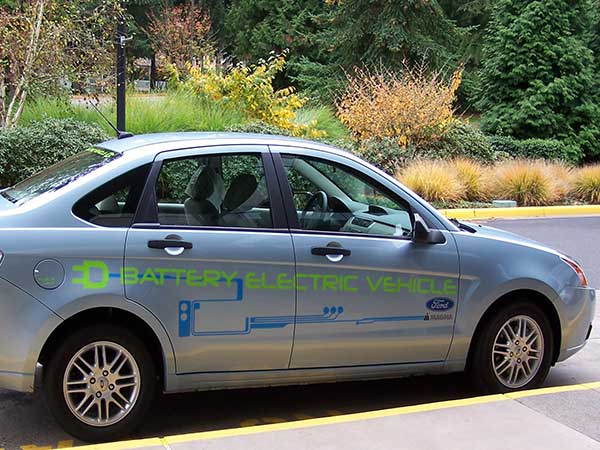The primary purpose of Solar Roadways is to generate clean renewable energy on roadways and any other surface that can be walked or driven upon. That would include: parking lots, sidewalks, driveways, tarmacs, plazas, bike paths, playgrounds, garden paths, pool surrounds, courtyards and the like.
There are many longstanding uses for solar power, which are terrific. The SR concept takes solar technology to a new level. The idea is to collect the substantial solar energy which hits these surfaces but is currently not being utilized. In this way, they will have a dual purpose: modern infrastructure + smart power grid.
In the U.S., the highway infrastructure is in a dismal state. Solar Roadways was awarded a Phase I SBIR (Small Business Innovative Research) contract by the USDOT to research the viability of creating a highway system that would pay for itself over time through the generation of renewable energy. After completing two contracts with the USDOT, it is apparent that this goal is viable. SR panels can become the nation’s smart grid, providing energy to homes and businesses along the way.
Currently, most state DOTs (Department of Transportation) are no longer generating enough income through the gas tax to be able to keep up with road repairs. The last few decades have brought dramatic technological changes to cars, cell phones, computers, cameras, and many other technologies, but roads remain virtually unchanged.
It is obvious that it is time to modernize the highway system and create the first roadway system with a return on investment (ROI). In this way, two goals can be accomplished simultaneously: the creation of a modular, modern infrastructure while creating the renewable energy needed to effectively end the current dependence on fossil fuels.
The U.S. has enormous energy needs. The U.S. Energy Information Administration states that:
“Primary energy consumption in the United States was almost three times greater in 2014 than it was in 1949. In all but 18 of the years between 1949 and 2014, primary energy consumption increased over the previous year.”
“Primary energy includes petroleum, natural gas, coal, nuclear fuel, and renewable energy. Electricity is a secondary energy source that is generated from these primary forms of energy.
Primary energy sources are commonly measured in different units: one barrel (42 gallons) of oil, cubic feet of natural gas, tons of coal. To compare across fuels a common unit of measure is used. The United States uses British thermal unit, or Btus, which measure fuel use by the energy content of each fuel source.
Total U.S. energy use in 2013 was about 97.5 quadrillion Btus. One quadrillion equals 1015, or one thousand trillion. One quadrillion Btus, often referred to as a quad, therefore represents about 1% of total U.S. energy use.
In physical energy terms, one quad represents 172 million barrels of oil (about nine days of U.S. petroleum use), 51 million tons of coal (about 5.5% of total U.S. coal consumption in 2013), or 1 trillion cubic feet of dry natural gas (about 1.4% of total U.S. natural gas use in 2013).
Petroleum accounts for the largest share of U.S. primary energy consumption, followed by natural gas, coal, renewable energy (including hydropower, wind, biomass, geothermal, and solar), and nuclear electric power.”
It is apparent that renewable energy, including solar energy, currently meets very little of the energy needs for the U.S. Solar Roadways® is emerging as solar technology is advancing and costs of solar cells are declining – a perfect combination.
Using very conservative numbers, calculations indicate that if all driving and walking surfaces in the U.S. were converted to Solar Roadway panels, they could produce over three times the electricity used in the United States. In fact, just the "lower 48" could almost produce enough electricity to supply the entire world. To see more detail about those calculations, click here.
There are many misconceptions about solar energy production. People often ask: “How many panels will it take to power my house?” or “How much energy will one panel produce in a year”? The answer to both questions is “It depends on a multitude of variable factors”. For example, a driveway in Minnesota is not going to generate as much energy as the same sized driveway in Arizona.
It’s easier to think about panels in terms of wattage. For instance, the solar prototype parking lot we created in our Phase II contract with the USDOT with SR2 panels is roughly equivalent to a 3600-watt solar array.
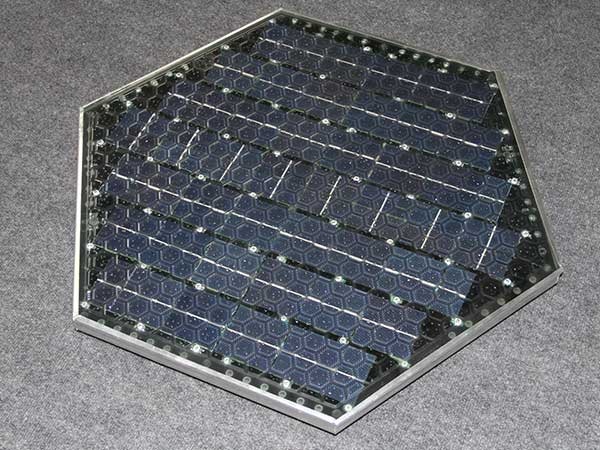
Each of the SR full-size hexagonal panels covers an area of about 4.39 square feet. The SR2 panels were approximately 36 watt panels. The new SR3 panels are 44 watt panels. There are also half panels (24-watt) and quarter panels (12-watt).
The amount of power produced depends entirely upon the amount of sunshine available, so in addition to the variable of location discussed above, other variables include: the degree of shading, season/time of the year, time of day, and other local microclimatatic factors. It’s normal for solar gain to increase in sunny seasons and conditions and decrease when less sunshine is available. Potential customers will want to understand what they can expect from their exact location in each season as well as the averaged amount per year.
The next factor to understand is the ratio between driveway and home or parking lot and business. Obviously a situation with a long driveway and smaller home will have a much better chance of energy independence, than another customer’s short driveway with a large home. How much energy one typically uses must also be taken into account. SR will provide customer service to help each potential customer understand what they might expect.
Another factor to consider is that SR will always have the flexibility to use whatever solar cells meet the criteria of offering the most efficiency at an affordable price point. SR panels will become even more efficient over time as new technologies become available to keep up with increased demand for energy with population growth.
If Solar Roadways® becomes the new smart grid - the backbone of the energy delivery system, all forms of renewable energy can be welcomed into the grid with ease. A common problem with centralized renewable energy projects is their difficulty in transferring energy to the grid. SR can facilitate this energy transfer, since roads are universally available and could offer widely available connectivity.
The EPA: describes the problem this way:
“The absence of standard interconnection rules, or uniform procedures and technical requirements for connecting renewable energy systems to the electric utility's grid, can make it difficult, if not impossible, for renewable systems to connect to the electric utility's grid.”
“Many renewable resources are located in remote areas that lack ready or cost–effective access to transmission. States that have not established clear utility regulations that enable investments in transmission to be reimbursable (i.e., cost recovery), nor coordinated planning and permitting processes, slow the development of utility–scale renewable projects in their territory.”
Solar Roadways® can itself produce massive amounts of renewable energy if decisions are made to implement it on a major scale. It will always be important to support and facilitate other forms of renewable energy as well.
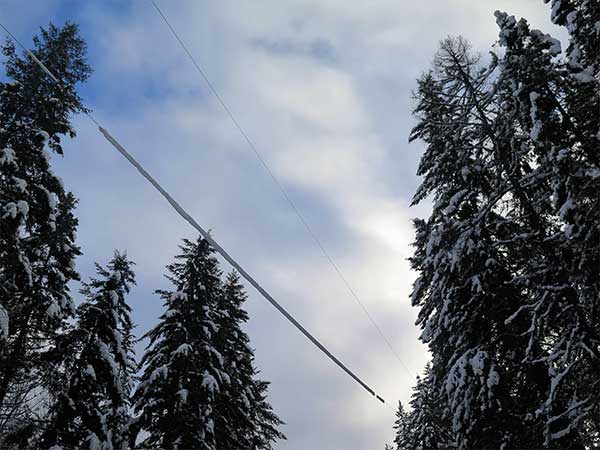
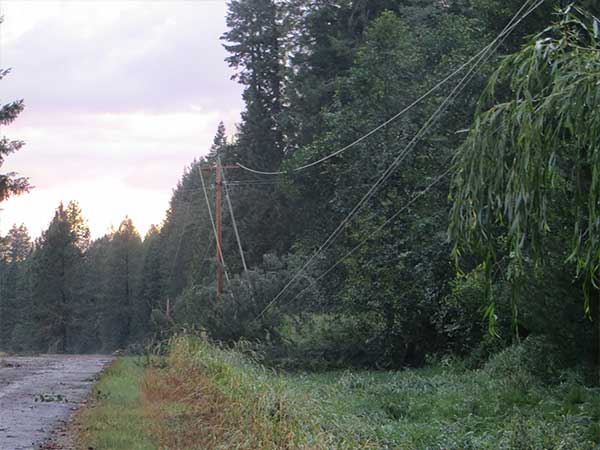
Currently, power lines are either up on poles where they are susceptible to damage from storms, or buried in the ground. If they are up on poles, wind can knock them down. Ice can collect on cables, causing breakage and power outages. Utility workers have to climb poles to access them for repair and are sometimes hurt. If the lines are buried, the utility workers have to dig them up with shovels, not knowing exactly where they are. Gas lines are often nearby, posing a danger. Solar Roadways® Cable Corridors offer a solution. There are two sections: one for cables and one for water. The cable section offers a “home” for cables where they are safe from environmental hazards and easy for utility workers to access (locked to others). Power outages could become a rare event.
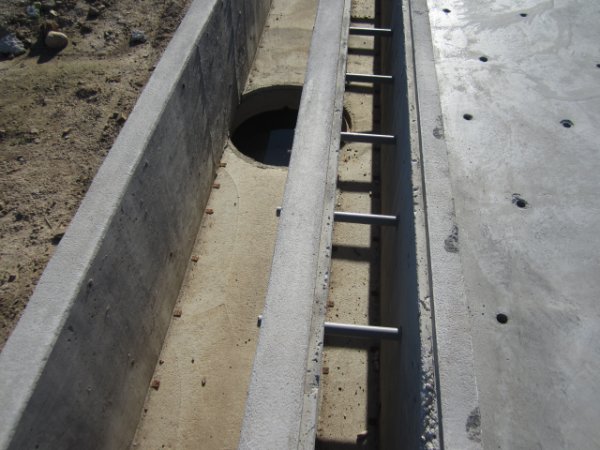
Most energy systems are centralized. They provide power from a central location and send it out via transmission lines over a long distance. This leads to a substantial loss of that valuable energy. Examples of centralized systems include nuclear power plants, coal-fired power plants, wind farms, large solar arrays, etc. Centralized power plants create security risks because they are more vulnerable to attacks by hackers, terrorists, etc. They are more susceptible to damage from natural disasters as well. Entire sections of a country can be left powerless.
A decentralized system such as SR offers greater security. Much of the power is used near the power source - i.e., driveways power homes, parking lots power businesses, etc. Excess power produced by this system can feed surrounding neighborhoods. This helps with security: even if a section of roadway is completely destroyed by some type of disaster, both sides of the now damaged road still produce electricity - no one loses power. National security can be enhanced in every country.
Just as eating organic food produced in closer proximity to one’s home reduces transportation costs (and enhances health), there is a similar advantage to using power that is produced close by. Since driveways, sidewalks, patios, and parking lots supply power to homes and businesses in close proximity, less energy needs to be transported over long distances, resulting is less loss. Smaller cables are required, saving materials and therefore costs. In the SR system, the power is produced closer to the point of use.
Just as highways can have a return on investment, home and business owners can do the same. When one purchases a standard driveway or parking lot, it begins immediately to serve its purpose: to provide a strong, flat place where people may drive and walk safely. That is it. It begins to lose value immediately, just like a new car when it’s driven off the lot. It produces no energy and gives nothing else of value to the customer.
SR panels offer a wealth of benefits, starting with energy. They power homes and businesses with clean energy. They do even more. The LED lights embedded in the panels make painted road lines obsolete. They offer flexible line, signage, and even decorating options across all SR applications. Read more about LEDs here. The heating elements in the panels prevent snow and ice accumulation, providing safer surfaces for both drivers and pedestrians. Read more about heating elements here.
Rooftop solar is another terrific option for home and business owners. One difference is that SR panels are a hybrid replacement product; they provide energy like rooftop solar while also providing an aesthetically pleasing alternative driveway surface. The panels become the road, become the driveway, etc, whereas traditional rooftop solar panels are an additional expense after one has paid for a roof, and they must be taken down when the roof needs to be repaired and then reinstalled. Many also appreciate that SR panels are easier to access, with none of the danger inherent in installing and maintaining panels on roofs.
When it comes to the storage of the renewable energy produced by SR panels, customers will have a variety of options. A virtual grid system can be used with a specialized meter from the utility company that provides net metering. These meters spin backward when extra energy is produced. In turn, energy can be pulled back from the grid when needed to power the panel’s LED lights and heating elements at night, or in a storm when the panels may not produce sufficient energy. That is the system used for our first prototype parking lot and it’s working very well. Batteries were not selected for use in the SR2 parking lot, since they tend not to be environmentally friendly and using the virtual grid spares one that purchase. One downside to this system is that there is no energy available during a power outage due to the fact that the micro-inverters disconnect when they don’t sense energy on the existing power lines.
Those who want to have a storage system can incorporate most any kind of renewable energy storage for use along with their SR panels. Many potential customers say that they plan to use the new Tesla Powerwall, or other types of batteries. Any standard renewable energy storage device should work and could be placed in the Cable Corridor for easy access, if customers wish to incorporate them.
Solar cells produce DC energy. Homes and businesses currently use AC energy, so the DC solar energy is converted to AC energy by a DC-to-AC converter. Unfortunately, every time a conversion is made from DC to AC (or AC to DC), losses occur in the conversion. This means that some of the energy produced by solar cells gets lost when it's converted to AC for the home.
Many, if not most, of the electronics in our home don't actually run on AC. They are plugged into an AC outlet, but then a circuit inside of the electronic device converts the AC to DC before using the power, creating another energy loss.
If solar energy became the primary energy source, then it would make sense to convert homes and businesses to DC. That way, the power produced by solar driveways, parking lots, roads, etc. wouldn't be wasted by being converted from DC to AC and then from AC back to DC again.
Since heavy duty DC motors are available, all common household utilities could be run on DC power. Appliance manufacturers would save money by eliminating the AC-to-DC converter circuitry that they would no longer need. That savings could be passed on to the consumers. Less power loss and more savings would be win-win solution.
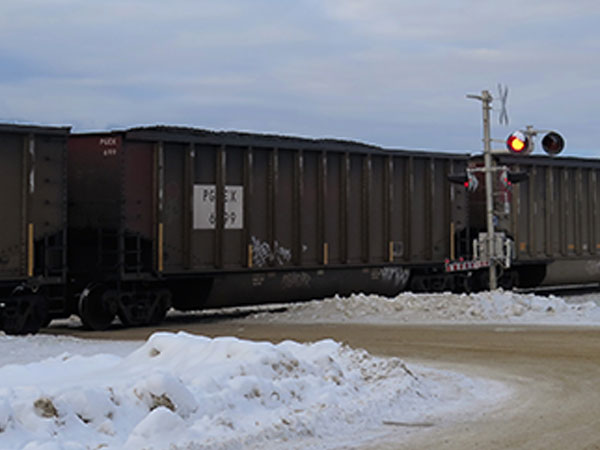
It is estimated that approximately half (different agencies provide different estimates, but the average is about 50-percent) of the greenhouse gases that are causing climate change come from the burning of fossil fuels (primarily coal) to generate electricity. Solar Roadways, if widely adopted, therefore has the ability to eliminate half of the greenhouse gases currently being produced. This would reduce pollution, make the air we breathe cleaner and safer, eliminate the ramifications of dependence on fossil fuels, and help slow climate change, which most scientists now agree is happening much faster than anticipated.
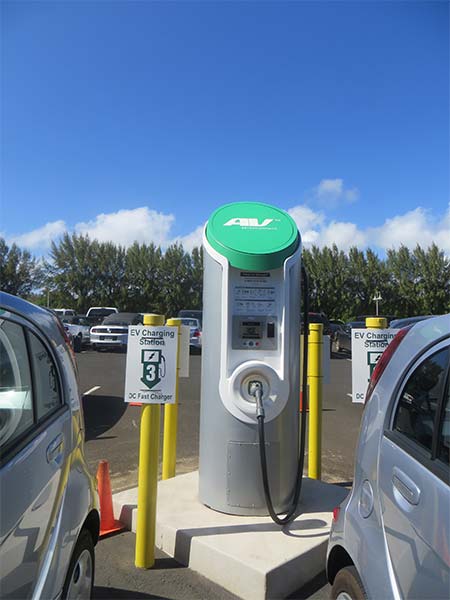
A Solar Roadway is an electric road that can recharge electric vehicles (EVs) anywhere and with clean energy from the sun. Traditionally, EVs are charged with fossil fuels, much to the chagrin of EV owners who are often environmentally conscious. EV owners will be able to charge EVs with clean renewable energy at home with the help of solar driveways, patios and the like, and on solar parking lots at restaurants, and while shopping, for example.
Transitioning to electric vehicles is important for many reasons. AAA writes, in their website Making America Stronger:
“Driving is part of the American way of life. All told, we own more than 254 million road vehicles and we travel an average of more than 9,000 miles per vehicle each year. Virtually all of these vehicles are powered by petroleum-based fuel. As other countries adopt our lifestyle of freedom and mobility, the global demand for oil increases. Dependence on unstable areas of the world for some of our petroleum supplies can result in economically disruptive oil price shocks and could potentially constrain our ability to respond appropriately to national security concerns.”
They add this statistic about petroleum:
“According to the U.S. Department of Energy, petroleum supplies 99% of the fuel used in cars and trucks today. Gasoline and diesel prices continue to fluctuate as more nations modernize and compete for limited oil supplies.”
They discuss how renewables can help:
“EVs replace energy from imported oil with electricity that is produced in North America, and this benefit is magnified when that electricity comes from renewable sources such as nuclear, hydroelectric, wind or solar power. Over time, EVs will become even more environmentally friendly as additional renewable energy from other technologies is added to the power grid.”
Solar Roadways® can add that clean solar energy to the grid, allowing EVs to charge on clean energy from the sun, reducing dependence on fossil fuels of all kinds. This can have a positive effect regarding climate change too.
The Intergovernmental Panel on Climate Change writes:
“Human influence on the climate system is clear, and recent anthropogenic emissions of greenhouse gases are the highest in history. Recent climate changes have had widespread impacts on human and natural systems.”
They add this warning and potential solution:
“Continued emission of greenhouse gases will cause further warming and long-lasting changes in all components of the climate system, increasing the likelihood of severe, pervasive and irreversible impacts for people and ecosystems. Limiting climate change would require substantial and sustained reductions in greenhouse gas emissions which, together with adaptation, can limit climate change risks.”
Implementation of Solar Roadways® on a grand scale could help bring about those “substantial and sustained reductions in greenhouse gas emissions.” When enough SR highway infrastructure is in place, another option will become available. Consultations are ongoing with companies that make mutual induction plates to charge EVs while they're driving (at least one has tested successfully at 75mph). The Solar Roadway could charge the EVs while they're traveling, which would increase their range. It’s quite simple - the "receiver" plate gets mounted beneath the EV and the "transmitter" plate is installed in the road. Currently, there is no delivery system for such mutual induction plates on highways, but Solar Roadways can solve that. With an infrastructure in place that will finally make EVs practical, people would likely start trading in their internal combustion engine vehicles for EVs.
Eventually, this system will eliminate an additional 25-percent of greenhouse gases that currently comes from vehicle exhaust, giving SR the potential to eliminate 75% of greenhouse gases with universal adoption.
